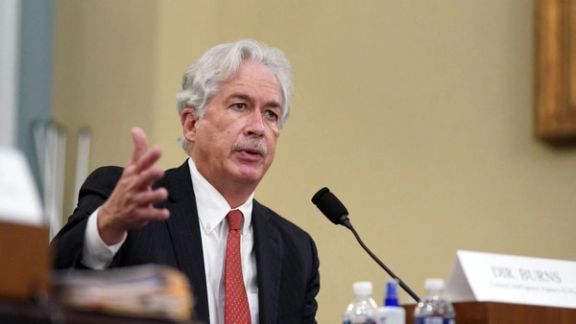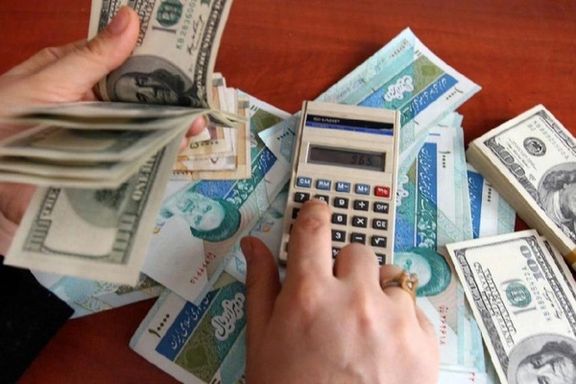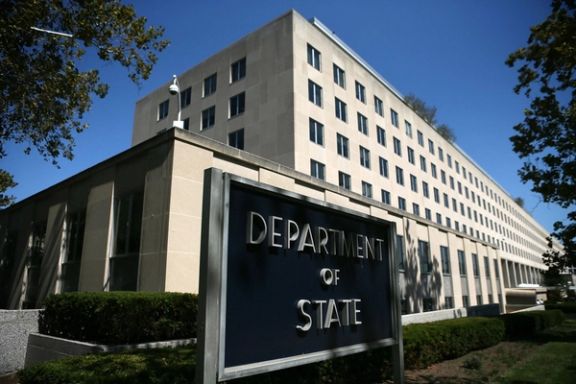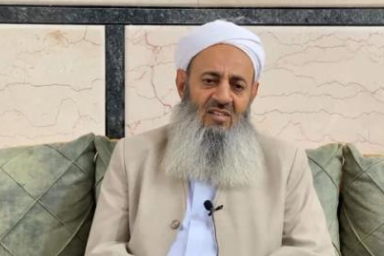Magnitude 5.7 Earthquake Strikes Northwestern Iran

A magnitude 5.7 earthquake struck northwestern Iran on Wednesday, and medical authorities in the area reported that at least 276 people had been injured.

A magnitude 5.7 earthquake struck northwestern Iran on Wednesday, and medical authorities in the area reported that at least 276 people had been injured.
The quake's epicentre was close to the town of Khoy in the province of West Azerbaijan. Khoy Medical Emergency Service was quoted as saying that "276 people have been injured so far, including 68 who were hospitalised for minor fractures."
The quake was about 11.6 km (7.2 miles) from Khowy and at a depth of 10 km (6.21 miles), the United States Geological Survey said.
The quake hit at 3:51 local time and was followed by several aftershocks according to Iran seismological center. A local official sadi that the the aftershocks have prevented people from returning to their homes.
The GFZ German Research Centre for Geosciences (GFZ) earlier said that the quake was magnitude 5.5 and close to the Armenia-Azerbaijan-Iran border region.

CIA Director Bill Burns has reiterated US commitment to support the “free flow of information" in Iran following the shutdown of internet access amid the ongoing uprising.
Burns told CBS on Tuesday that the new wave of rallies in Iran are not isolated protests, tacitly agreeing with the interviewer that this can be a beginning of a revolution in the country.
“I don’t think they are isolated protests, and what is striking – at least to me and our analysts – is the sweep of those protests right now,” he said, adding that “these are incredibly brave people and many incredibly brave young women and they are fed up in a lot of ways.”
Burns said, “They are willing to take the risk of getting out and demonstrate because they are fed up with the economic decay, the corruption, with social restrictions especially that Iranian women face, and the political repression as well.”
He called the Iranian regime an “autocratic system,” noting that they are very good at repressing people and “they are quite ruthless now in putting down those kinds of protests as well.”
Others are helping Iranians get easier access to information since the authorities have increased their restrictions. The US Treasury Department has given the greenlight to SpaceX CEO Elon Musk to activate satellite Internet service Starlink for Iranians and Google has just launched a VPN service for Iranians, but using such methods are not simple enough for ordinary people and still not many have managed to access the Internet via them.

Switzerland’s Foreign Ministry told Iran International on Monday that the country is working bilaterally and multilaterally to protect human rights in Iran.
In response to our correspondent, Swiss Foreign Ministry spokesperson Pierre-Alain Eltschinger said that "Switzerland is following current developments in Iran closely.”
The ministry said that Switzerland on September 26 called for a rapid, impartial and independent investigation into the death of Mahsa Amini -- the Iranian girl whose death in police custody sparked an uprising across Iran -- within the framework of the Human Rights Council.
It also urged Iranian authorities to exercise restraint towards peaceful demonstrators and to end Internet restrictions, Eltschinger added.
Based on the guidelines of the Federal Department of Foreign Affairs, the country continues its efforts to protect human rights in Iran “specifically in the areas of freedom of expression, abolition of torture and the death penalty, women's rights and the protection of minorities,” the spokesperson noted.
Amid its heavy-handed clampdown on protesters throughout Iran, the Islamic Republic has so far summoned several ambassadors and foreign diplomats over their respective countries’ support for the protests.
A German foreign ministry source said on Monday that Germany, France, Denmark, Spain, Italy and the Czech Republic have submitted 16 proposals for new measures by the European Union against Iran over its violent clampdown on current protests.

Iran’s rial has dropped to its lowest point since June when it registered an all-time low against other currencies. The rial is close to breaking that record.
On Monday, Iran’s battered currency was trading at 332,000 against one US dollar amid pessimism over a nuclear deal with the United States and nationwide antigovernment protests.
The rial, which has dropped tenfold in the past five years, has proven to be sensitive to news about the nuclear talks. It began a steep fall in early 2018 when it appeared that former US president Donald Trump intended to withdraw from the Obama-era nuclear accord known as the JCPOA. After Trump announced his decision in May 2018 and imposed economic sanctions on Iran, the rial fell more drastically, and annual inflation rose to more than 40 percent.
Negotiations to revive the JCPOA have stalled after 18 months of indirect talks between Tehran and Washington, with no immediate prospect of a resumption.
In the absence of a deal, Iran’s crude oil exports remain sanctioned by the US and its banking system isolated from the international financial system.
Before the 1970 revolution that toppled the monarchy, the US dollar was worth 70 rials. The current exchange rate represents an almost 5000-fold drop in 43 years.

The United States said Sunday that reports from Iranian sources of a transfer of funds related to the release of Bagher (Baquer) Namazi and to a furlough for his son Siamak Namazi are categorically false.
In response to Iran International, a US State Department spokesperson said that "Any claim that Iran's lifting of a travel ban on Baquer Namazi was part of a deal for a transfer of frozen funds is categorically false,” adding that “We understand that the lifting of the travel ban and his son’s furlough were related to his medical requirement.”
“Baquer Namazi was unjustly detained in Iran and then not permitted to leave the county after serving his sentence, despite his repeated requirement for urgent medical attention,” the source noted, saying that “We continue to have indirect discussions on possible humanitarian arrangements to facilitate the urgent release of the remaining US citizens wrongfully detained by Iran, but we have nothing further to announce at this time."
Earlier in the day, Tehran claimed that it will receive $7 billion of its frozen funds for a prisoner exchange deal with the United States, but it did not specifically claim that the money is related to the Namazis.
United Nations spokesperson Stephane Dujarric announced about Namazis in a statement on Saturday, but the Islamic Republic periodically announces that release of its frozen funds is imminent to prop up its currency.

Leading Iranian Sunni cleric Molavi Abdolhamid said Sunday that plainclothes security agents fired live bullets at the heads and hearts of unarmed people.
In a video message, Abdolhamid, the religious leader of Iran’s largely Sunni Baluch population, said security forces opened fire on people as they were returning to their homes after the Friday prayers in Zahedan.
Calling the killings an "unprecedented disaster," he claimed that the plainclothes agents started shooting in response to a small number of youths who threw stones at the police station, but there were many people among those shot that were saying their prayers and were not even chanting slogans.
"According to the reports that we obtained, the forces of the special unit were apparently already stationed in the said police station," he added.
At least 41 people were killed during the bloody Friday in Zahedan in southeastern Iran, increasing the death toll in the current protests in Iran to 133, the Oslo-based NGO, Iran Human Rights reported on Sunday. At least 200 more people were injured as police opened fire at protesters.
The Sunni cleric also confirmed reports last Friday about the rape of a 15-year-old girl in June by Colonel Ebrahim Khouchakzai, the commander of the police in the city of Chabahar.